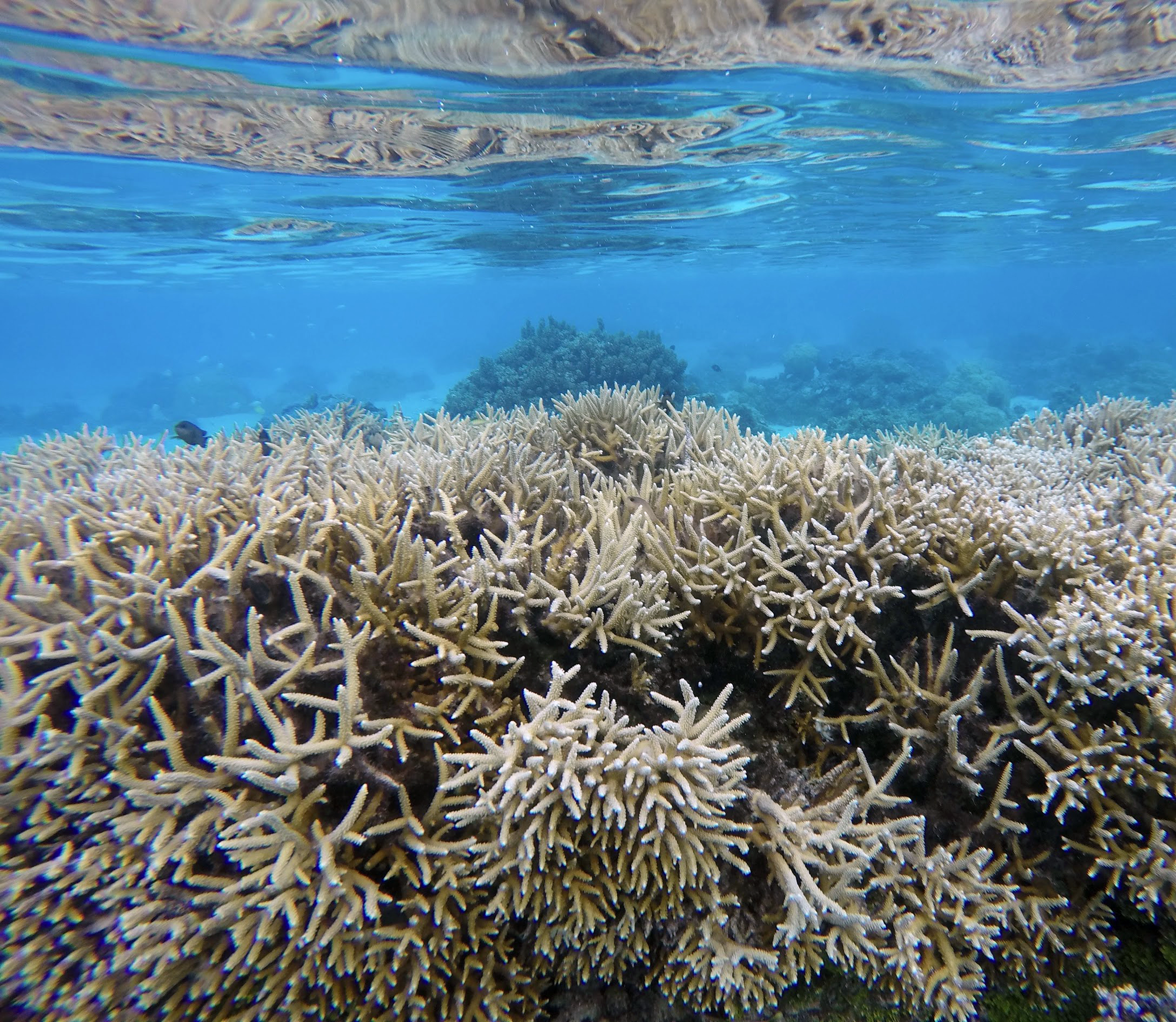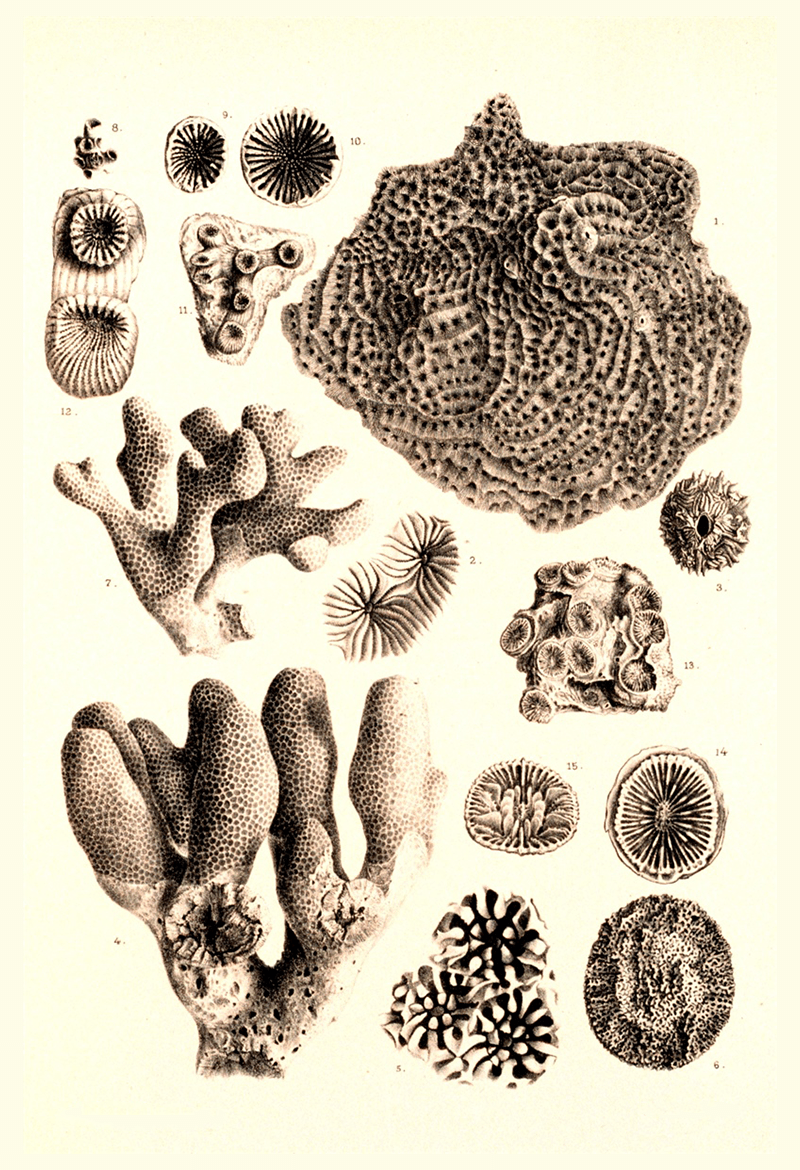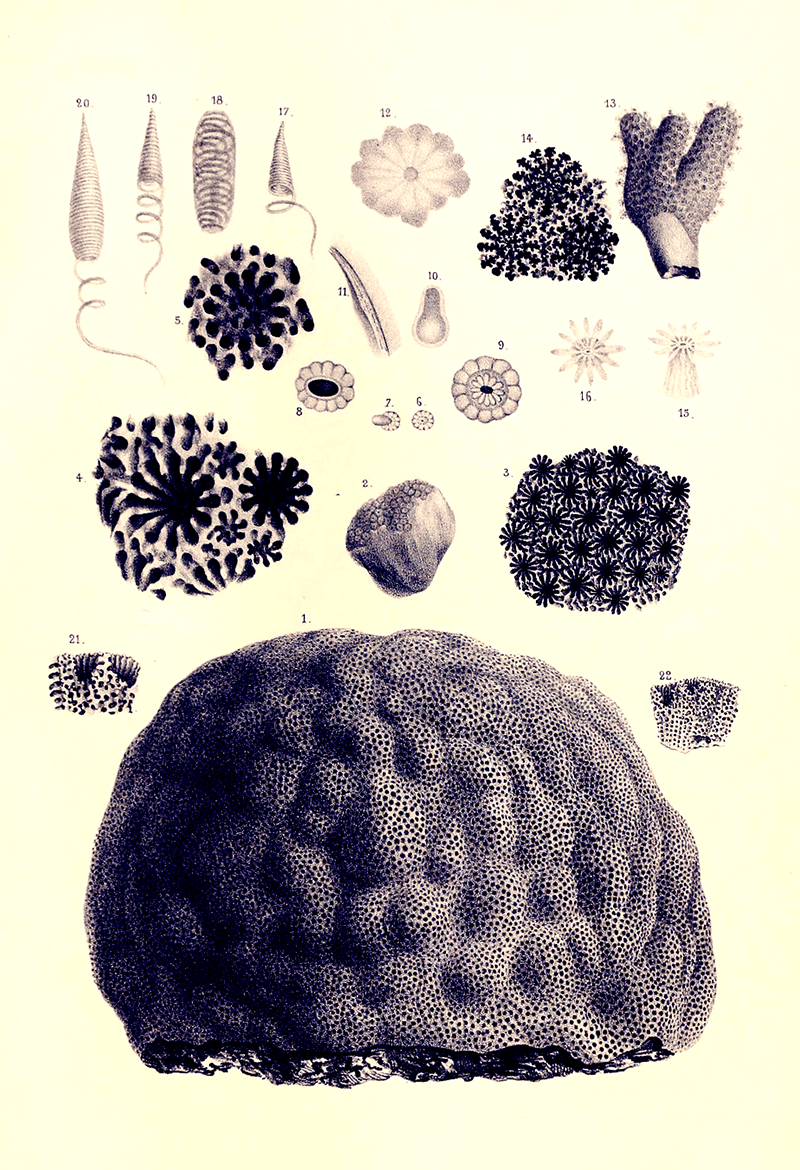The E5 Coral team is assembled for the writing and the submission of the present proposal to the National Science Foundation’s Program “Rules of Life.” The proposal was awarded in July 2019 and officially starts in September of that year. Logistical preparations commence including preparing travel and permit arrangements.
E5 CORAL
MILESTONES
2019
2020
The first trips to Mo’orea take place in January and March 2020. Three field sites are defined in the backreef. Corals belonging to genera Acropora, Porites, and Pocillopora start to be tagged for seasonal variation study.
In April 2020, the COVID-19 pandemic grounds all travel, forcing the sampling to stop while increasing the efforts to develop remote research. As a consequence, the modeling component of the project is boosted.
In September 2020 when the team returns to the field the first samples are processed for physiological data and molecular analyses start.
Methods
Observations, experiments, or other relevant data to construct or test hypotheses that purport to solve it.

Mo’orea is part of French Polynesia’s Society Islands archipelago, and is probably one of the best-studied coral reef ecosystems in the world.
The fieldwork portion of the present project takes place in the idyllic island of Mo’orea, offering an unparalleled opportunity for studies of coral reef ecosystems. All major coral reef types are present and accessible by small boats and the research opportunities greatly facilitated by the infrastructure at the Richard B. Gump South Pacific Research Station on Cooks Bay.

The complex nature of corals poses great challenges but also provides an unmatched model to study the molecular underpinnings of phenotypic plasticity.
Corals are ecosystem-forming organisms that have evolved to live under very particular conditions. Their ability to survive in the ocean is largely determined by the maintenance of homogeneous environmental conditions and is possible only through the interaction with different types of microorganisms, notably photosynthetic microalgae, shaping their responses.

The diverse types of epigenetic modifications modulating DNA function are emerging as “environmental sensors” promoting phenotypic responses.
Epigenetics is defined as the study of molecules and mechanisms that can perpetuate alternative gene activity states in the context of the same DNA sequence. Epigenetic modifications are triggered in response to environmental changes, facilitating the onset and inheritance of gene expression programs that promote acclimatized phenotypes.

The fate of an organism is ultimately subject to its ability to efficiently obtain energy from the nutrients present in the environment through metabolic reactions.
Cells transform nutrients into energy, generating metabolites that will be used as cofactors by other processes, including the onset of specific epigenetic modifications. As a consequence, a direct link between environmental conditions and the regulation of gene function through epigenetic modifications is set, representing one of the most exciting hypothesis in this project.

Mathematical tools help us build frameworks for our data and make predictions for how corals will respond to current and future ocean conditions.
Our models are grounded in detailed representations of how corals and their photosynthetic symbionts exchange nutrients and energy. Then, we scale to population models that predict how corals grow, reproduce, and colonize new reefs, and, ultimately, create eco-evolutionary models that ask how epigenetic modification allows corals to tolerate variable environments.
Acropora
Acropora spp. are branching and tabular corals that grow quickly and provide extensive three-dimensional habitat for fish and other marine life on coral reefs. Acropora spp are diverse and important reef builders, but are also some of the most environmentally sensitive species. They are broadcast spawners that do not transmit symbionts to their offspring, but take them up from their environment and are therefore symbiotic generalists.
Pocillopora
Pocillopora spp., often called cauliflower corals, are branching corals that also grow quickly and provide extensive 3 dimensional habitat for fish and other marine life on coral reefs. Pocillopora spp are some of the earliest species to colonize new and recovering reef areas. They are also an environmentally sensitive species. They are both broadcast spawners and brooders and can transmit symbionts to their offspring. Pocillopora are very common on the reefs of Mo’orea. They have high species diversity and very similar shapes and branching patterns, or morphology.
Porites
Porites spp are often called massive Porites, as they form large mounding boulder shaped colonies. These corals are among the most environmentally resistant species on the reef. They are primarily broadcasting spawners and transmit their symbionts within their eggs. Porites are dominated by a single type of algal symbiont with high fidelity and productivity.





